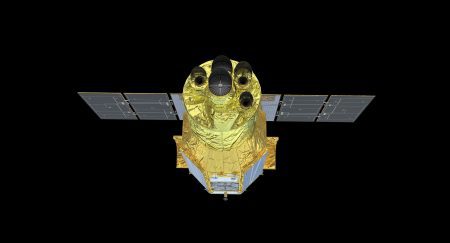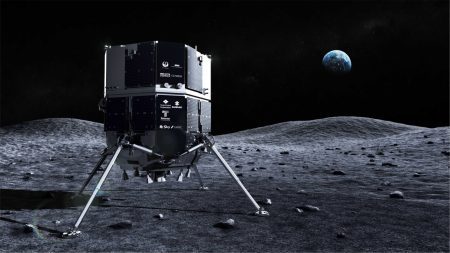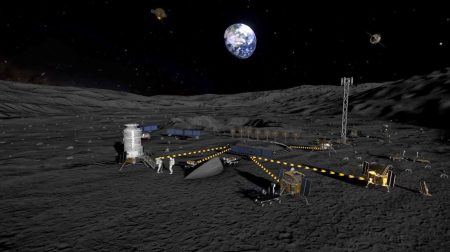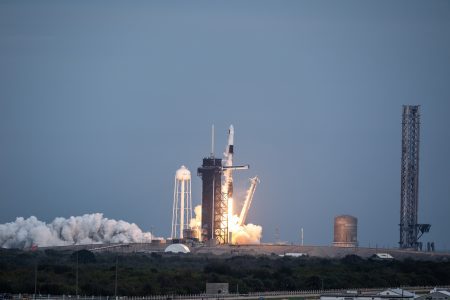Leaders of the National Reconnaissance Office, the U.S. government agency responsible for creating and maintaining America’s intelligence satellites, often talk about their dedication to buying from commercial sources.
“Purchase what is available and create what is necessary” is the long-standing strategy of the agency, according to NRO Director Chris Scolese, who said this in 2022 when the agency gave contracts worth $4 billion over ten years to BlackSky, Maxar Technologies, and Planet. The contracts for Earth-observation, granted under NRO’s Electro-Optical Commercial Layer (EOCL) program, were among the largest commercial awards in the history of the intelligence agency, as stated by Pete Muend, director of the NRO Commercial Systems Program Office (CSPO). NRO also buys rides to space for classified payloads through the Rapid Acquisition of a Small Rocket program.
To gain insight into NRO’s approach to commercial purchases, SpaceNews spoke with Muend. Before helping to establish CSPO in 2018, Muend led NRO’s Commercial Geospatial Intelligence Activity, a joint NRO-National Geospatial-Intelligence Agency initiative focused on DEBRA WERNER commercial geospatial intelligence capabilities.
What do you mean by the words, “Purchase what is available and create what is necessary”? For example, does “purchase” refer to buying commercial products or services?
Muend: Our approach to commercial capabilities, products, and services is simple and well-expressed in that motto. How we do this can take various forms. Through my office, it involves purchasing commercial data as a service, such as imagery, radar imagery, and commercial RF remote sensing data. But it also includes other things like launch services or cloud data services, products, and tools that enable us to take advantage of the cost-effectiveness and innovation that the industry can offer. It allows us to focus our other resources on the most sensitive and difficult missions, where our adversaries are always trying to stay ahead, and we’re trying to stay ahead of them by using the best of what’s available with world-class technology. This includes missions that don’t have any commercial demand outside the U.S. government, where we’re the sole user of that data. However, that approach, which is sometimes evident in buying the data and services and sometimes just in purchasing products, contributes to the larger diversified architecture, the most capable, diverse, and resilient overhead constellation that we’re putting into orbit and, frankly, that the world’s ever seen.
How is the “Purchase what is available” sentiment included in the acquisition planning process? For example, are system specifications for requests for proposals written with this goal in mind?
Our approach to commercial capabilities is fully integrated into the broader acquisition process. Often, this influences how the RFP is drafted and the language we use— a couple examples to highlight.
The Rapid Acquisition of Small Rockets contract allowed the NRO to explore new opportunities for launching small satellites through a streamlined commercial approach. We granted several launch opportunities through that platform. In other cases, we have been able to buy entire systems and adopt or modify them for our purposes. Obviously, this gives us access to different, broader, and constantly evolving commercial technologies and landscapes that we would otherwise have to develop ourselves.
In our office, a big example is the EOCL contracts. This was a great demonstration of buying what we can and building what we have to. We carefully considered different options and decided that commercial solutions could meet our needs. We made a long-term plan and budget for this and awarded three contracts to three providers. These were some of the largest commercial contracts NRO has ever awarded: $4 billion over 10 years.
The EOCL contracts were part of a larger process where we considered whether commercial could handle the task and where we were not confident that the industry would be able to. This led to other systems that we are still developing in-house. This has been a great result and a long-term commitment to using commercial solutions when we were confident we could rely on them. Of course, we also have needs where that was not the case. We have very difficult missions that we need to fulfill across the NRO. We continue to do that as well.
Another example began with our Strategic Commercial Enhancement contracts for radar, initially to explore the usefulness of radar, understand commercial companies’ capabilities and to get our hands on the data, explore mission usefulness and use the data as well. This is seeing exceptional success and providing meaningful capability and mission usefulness. We’ve been able to expand that over time. Now, across the executive branch, we’re having a thorough discussion about whether commercial radar is something that we should formalize into a longer-term plan, similar to what we did with EOCL
What products or services would be impossible or hard to buy commercially?
The commercial industry and its capabilities are always changing, so we need to make sure we're flexible on our end to use some of those evolving technologies and new capabilities.
There are a couple areas, and I don’t want to get into specifics, but there are areas of the market that there’s little or no incentive for industry to pursue certain products or services. With that said, that is always changing. Commercial is always improving their capabilities in various aspects. We do have to be open-minded and make sure we challenge ourselves to use and include those commercial capabilities everywhere we can. Of course, where we can’t, we continue to build out the technologies and capabilities on the government side.
What are the obstacles to expanding your use or purchase of commercial products and services?
I would point to two things. One is more cultural. That goes to the integration of commercial capabilities into the government architectures. We are working hard and carefully across the NRO and certainly with our mission partners and functional managers and combatant commands to integrate the commercial capabilities that we have on contract, for example, into the larger enterprise architectures, so they can be used and incorporated into assessments and those sorts of things across the Intelligence Community just as easily as the data coming from other government systems and national systems. We are working hard on that. But certainly, there are challenges. Some of these commercial capabilities are a little bit different than some of the systems that intelligence community analysts are used to using. It is a challenge to make sure that as we bring those systems on board, they are truly integrated in the enterprise architecture and utilized for all the value that they can potentially bring to bear.
Another thing I would mention is outside influence and funding. As we collaborate across the business sector, we consistently advise companies to be cautious about where they get money from, whether it's from private equity or venture capital, to help develop innovative capabilities. We want them to be mindful of who is providing the funding and what their motivations might be.
Is that because you can’t work with companies receiving investment from certain countries around the world?
It’s more than just a strict “can’t.” Some of our enemies may be indirectly or directly providing funding and trying to exert their influence on those companies. We want them to be aware of that.
Are you taking any steps to address the obstacles to commercial purchases?
Yes, we are. On the integration side, we’re working very closely with our mission partners, the National Geospatial-Intelligence Agency, the National Security Agency, the broader Department of Defense and intelligence community, to take steps to proactively integrate the commercial capabilities that we can make use of. It is a constant set of efforts. There’s a lot of testing. There’s a lot of expectation-setting. We spend a lot of time and energy working through that because it is important if we’re going to truly make use of the commercial capabilities that we are putting on contract.
One effort is called Commercial GEOINT Integration. The goal is to integrate multiple commercial capabilities from various vendors into the larger system as smoothly and expandably as possible. We are trying to move away from isolated or customized levels of integration.
On the financial side, there’s a lot of discussion with the providers to ensure they are aware of funding sources. We work with our interagency partners across the intelligence community to make sure that we provide awareness and threat briefings to our companies and providers.
What percentage of your budget goes to commercial purchases, and how would you define them?
Because our budget is classified, we can’t get into the details, unfortunately. NRO is fully committed to leveraging commercial wherever we can and ensuring that we leverage it as a commercial product or service.
Does that mean you don’t bring in something and change it to make it a government product or service?
Yes. If there is a service we can utilize with a minimum or zero modification, that’s where it’s most cost-effective. If we have to take a commercial service and change it dramatically to uniquely meet our needs, that increasingly walks away from that potential.
Anything else you wanted to say?
NRO is in the midst of building out the largest and most capable, diverse, resilient overhead constellation in its history. Commercial capabilities play a key role in that. Commercial and national systems complement each other and allow us to satisfy a larger and broader set of requirements that are ever-increasing and ever-getting more difficult across the user community, from the DoD and intelligence community to federal civil missions. Our partnerships with industry are integral to our mission and key to our success. There seem to be more partnerships over the last five years. Certainly more partnerships and, at least on our side, more providers that we’re able to utilize data from. We’re looking forward to doing it even more.
This article was initially published in the May 2024 edition of SpaceNews Magazine.









